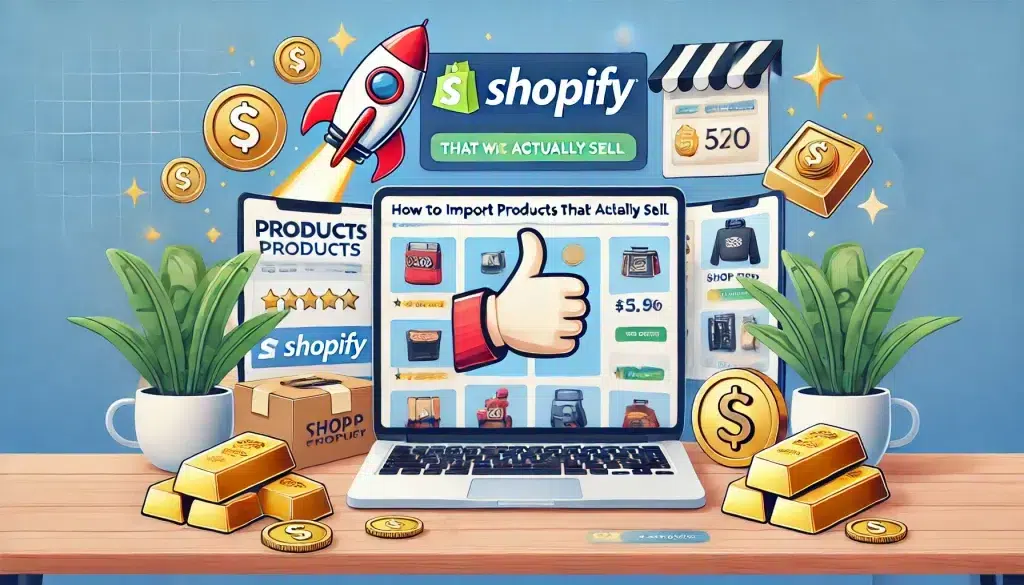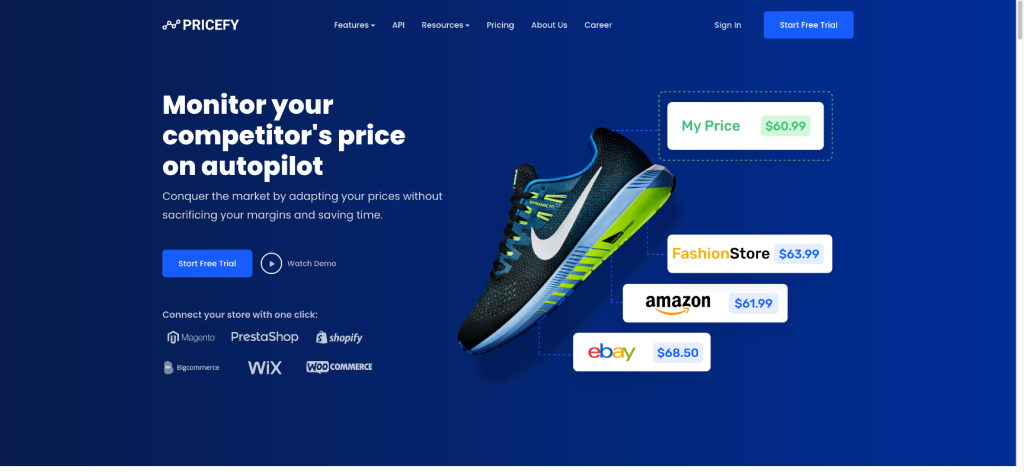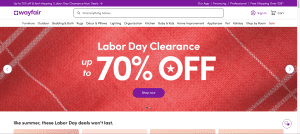
Importing products into your Shopify store is a crucial step in launching and growing your e-commerce business. However, ensuring that these products will actually sell requires careful planning, strategy, and ongoing management.
This comprehensive guide will walk you through the process of importing products that have a high likelihood of success in your Shopify store.
1. Understand Your Market and Niche
Before you start importing products, it’s essential to have a deep understanding of your target market and niche.
Key Steps:
- Conduct thorough market research to identify your target audience’s demographics, preferences, and pain points.
- Analyze competitors in your niche to understand what products are already popular and where there might be gaps in the market.
- Use tools like Google Trends, social media listening, and customer surveys to gather insights about your potential customers’ needs and wants.
- Create detailed buyer personas to guide your product selection and marketing strategies.
Pro Tip:
Consider emerging trends and how they might affect your niche.
For example, if you’re in the home goods sector, stay informed about interior design trends that could influence product demand.
2. Evaluate Product-Market Fit
Choosing products that align with your store’s theme and appeal to your target audience is crucial for success.
Key Considerations:
- Analyze the product-market fit by researching your competition and identifying popular products within your niche.
- Use tools like Google Trends, Shopify’s built-in analytics, and third-party tools like Jungle Scout or Helium 10 to identify trending products.
- Consider the product’s lifecycle and whether it’s a seasonal item or has long-term potential.
- Assess the product’s uniqueness and how it stands out from competitors’ offerings.
Advanced Strategy:
Develop a scoring system for potential products based on factors like trend strength, competition level, profit margin, and alignment with your brand.
This can help you prioritize which products to import first.
Using Pricefy for Competitive Research:

Pricefy is a powerful tool that can significantly enhance your product research and competitive analysis efforts. It allows you to analyze your competitors’ Shopify stores, providing valuable insights into their product offerings, pricing strategies, and best-selling items.
Here’s how you can leverage Pricefy in your product selection process:
- Open a Pricefy account and start monitoring your competitor’s Shopify store.
- Use Pricefy to obtain detailed information about each product, including prices, variants, and estimated sales volumes.
- Identify top-selling products across multiple competitors to spot trends and popular items in your niche.
- Analyze pricing strategies by comparing prices for similar products across different stores.
- Discover new product ideas that you may not have considered before.
- Use the data gathered to inform your own product selection, pricing, and marketing strategies.
By incorporating Pricefy into your research process, you can gain a more comprehensive understanding of your market landscape and make data-driven decisions about which products to import and how to position them competitively.
3. Test Products Before Committing
Before fully stocking up on a new product, it’s wise to start small and test the waters.
Testing Methods:
- Order a small batch or even just a sample to assess the product’s quality and appeal.
- If using a dropshipping model, test the supplier’s reliability, shipping times, and customer service.
- Consider running a pre-order campaign to gauge interest before committing to large inventory purchases.
- Use A/B testing on product pages to optimize conversion rates before scaling up.
Risk Mitigation:
Set up a system for tracking key performance indicators (KPIs) for each test product, including conversion rates, customer feedback, and return rates.
This data will be invaluable in deciding whether to scale up or discontinue a product.
4. Analyze Unit Economics
Understanding the costs involved in importing, marketing, and selling each product is essential for maintaining profitability.
Key Calculations:
- Calculate the total cost per unit, including:
- Product cost
- Shipping fees
- Import duties and taxes
- Packaging costs
- Payment processing fees
- Marketing expenses per sale
- Determine your pricing strategy, ensuring it covers all costs and provides a healthy profit margin.
- Factor in potential costs of returns, customer service, and inventory storage.
Advanced Consideration:
Implement a dynamic pricing strategy that adjusts based on factors like demand, competitor pricing, and inventory levels to maximize profitability while remaining competitive.
5. Mitigate Marketing and Sales Risks
Having a great product is only half the battle; you need a solid marketing strategy to drive sales.
Marketing Strategies:
- Develop a multi-channel marketing approach, including:
- Paid advertising (Google Ads, Facebook Ads, Instagram Ads)
- Social media marketing (organic content and engagement)
- Email marketing campaigns
- Search engine optimization (SEO)
- Content marketing (blog posts, videos, infographics)
- Leverage user-generated content and customer reviews to build trust and social proof.
- Consider influencer partnerships if they align with your brand and target audience.
Sales Optimization:
- Implement abandoned cart recovery emails to recapture lost sales.
- Use upselling and cross-selling techniques to increase average order value.
- Optimize your product pages with high-quality images, detailed descriptions, and clear call-to-actions.
6. Build Relationships with Suppliers

Having reliable suppliers is critical to your success in e-commerce.
Supplier Management:
- Research potential suppliers thoroughly, checking reviews and requesting samples before committing.
- Negotiate favorable terms, including pricing, minimum order quantities, and payment terms.
- Establish clear communication channels and set expectations for order fulfillment and quality control.
- Develop contingency plans with backup suppliers to mitigate risks of stock shortages or quality issues.
Pro Tip:
Consider visiting trade shows or supplier facilities in person when possible.
This can help you build stronger relationships and get a better understanding of their operations.
7. Monitor and Adjust Continuously
Once your products are live, it’s crucial to monitor their performance and be ready to make adjustments.
Performance Tracking:
- Use Shopify’s built-in analytics tools to track key metrics like:
- Sales volume
- Conversion rates
- Average order value
- Customer lifetime value
- Return rates
- Regularly review customer feedback and product reviews to identify areas for improvement.
- Stay informed about market trends and be prepared to pivot your product offerings as needed.
Continuous Improvement:
- Regularly update product descriptions, images, and marketing materials based on customer feedback and performance data.
- Experiment with product bundling or creating exclusive packages to differentiate your offerings.
- Consider developing private label or custom products based on successful imports to increase uniqueness and profit margins.
FAQ Section
Q: What is product-market fit, and why is it important?
A: Product-market fit refers to the degree to which a product satisfies a strong market demand. It’s important because it indicates that your product meets customer needs and has a higher likelihood of selling successfully. Achieving product-market fit often leads to organic growth, lower customer acquisition costs, and higher customer retention rates.
Q: How can I find reliable suppliers for my Shopify store?
A: To find reliable suppliers:
- Research on platforms like Alibaba, AliExpress, or Oberlo.
- Look for suppliers with high ratings, good communication, and the ability to handle your order volume.
- Request samples and start with small orders to test reliability.
- Check for certifications and compliance with industry standards.
- Consider using a sourcing agent for more complex or high-volume needs.
- Attend trade shows to meet suppliers in person and build relationships.
Q: What are some effective ways to market my imported products?
A: Effective marketing strategies include:
- Utilizing a mix of paid advertising (Google Ads, Facebook Ads, Instagram Ads)
- Implementing a strong social media presence with organic content and engagement
- Developing an email marketing strategy for nurturing leads and retaining customers
- Optimizing your store and product pages for search engines (SEO)
- Creating valuable content through blogging, videos, or podcasts
- Leveraging influencer partnerships for increased reach and credibility
- Implementing retargeting campaigns to re-engage potential customers
- Utilizing user-generated content to build trust and showcase real-world product use
Q: How do I calculate the right price for my products?
A: To calculate the right price:
- Determine your total cost per unit (COGS, shipping, taxes, marketing, etc.)
- Decide on your desired profit margin
- Research competitor pricing to ensure competitiveness
- Consider value-based pricing based on customer perceived value
- Factor in any seasonal fluctuations or market trends
- Use psychological pricing strategies (e.g., $9.99 instead of $10)
- Test different price points to find the optimal balance between sales volume and profitability
Q: What should I do if a product isn’t selling?
A: If a product isn’t selling:
- Review and optimize your product page (images, description, pricing)
- Analyze your marketing strategy and consider new channels or approaches
- Gather customer feedback to understand why the product isn’t appealing
- Consider bundling the product with better-selling items
- Try different pricing strategies or promotional offers
- If improvements don’t work, consider discontinuing the product and focusing on better performers
- Learn from the experience to inform future product selections
Q: How can I ensure my imported products meet quality standards?
A: To ensure quality:
- Request samples before placing large orders
- Implement a quality control process, either in-house or through a third-party inspection service
- Clearly communicate your quality standards to suppliers
- Consider visiting the supplier’s facility if possible
- Start with smaller orders to test quality consistency
- Implement a robust returns and refunds policy to build customer trust
- Regularly review customer feedback and address any quality issues promptly
Q: How do I handle customs and import regulations for my products?
A: To navigate customs and import regulations:
- Research import regulations for your specific products and target market
- Obtain necessary licenses or permits for importing
- Work with a customs broker to ensure compliance and smooth importation
- Accurately classify your products using the Harmonized System (HS) codes
- Understand and budget for applicable duties and taxes
- Keep detailed records of all import transactions
- Stay informed about changes in trade agreements or regulations that may affect your imports
Useful Links
- Shopify Help Center
- Google Trends
- Oberlo – Dropshipping App for Shopify
- AliExpress – Global Product Sourcing
- How to Find a Profitable Niche for Your Shopify Store
- Jungle Scout – Product Research Tool
- Helium 10 – Amazon & Walmart Seller Tools
- Import/Export Documentation: A Guide for Shopify Merchants
By following these comprehensive strategies and continuously learning from your experiences, you can significantly increase your chances of importing products that will sell successfully on your Shopify store.
Remember that e-commerce is dynamic, so stay adaptable and always be ready to adjust your approach based on market trends and customer feedback.




